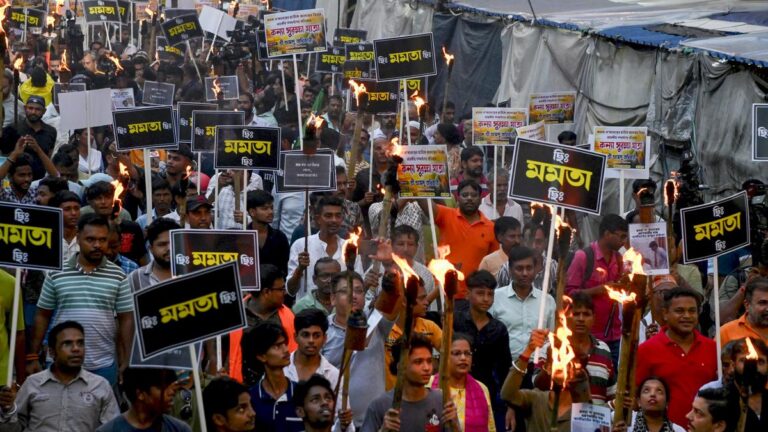
Aerial view of the Kariyachalli Island in Gulf of Mannar Marine Natioanl Park.
| Photo Credit: SPECIAL ARRANGEMENT
After the successful restoration of Vaan island in Gulf of Mannar Marine National Park, the Tamil Nadu government has commenced the restoration of Kariyachalli island in the Gulf of Mannar region, under the Tamil Nadu Sustainably Harnessing Ocean Resource (TNSHORE) initiative.
The restoration project, being carried out at a cost of ₹50 crore, is funded by the state government and the World Bank. The Tamil Nadu Forest Department, in partnership with the IIT-Madras and Suganthi Devadason Marine Research Institute in Thoothukudi, is undertaking this ambitious initiative.
The Gulf of Mannar (GoM) located on the southeastern coast of India, is one of the four major coral reef areas in India. It comprises 21 uninhabited low-lying islands within the Gulf of Mannar Marine National Park, stretching 160 km between Rameswaram and Thoothukudi.
The surrounding coral reefs in these islands help to protect the mainland from coastal erosion, extreme weather, while also supporting fisherfolks by increasing the fish production. However extensive coral mining, before it was completely stopped in 2005, the most selective mined species of boulder coral were from the genera Porites and Favia, which were principal reef builders and sediment suppliers of the reef island. As a result, many islands are shrinking due to erosion and lack of sediment replenishment.
In case of, Kariyachalli island, which belongs to the Thoothukudi group is located at about 4 km south of Sippikulam and 20 km northeast of Thoothukudi old harbour. According to a report from SDMRI, the total area of the island was 20.85 hectares in 1969 (Survey of India Toposheet), 16.64 hectares in 1986 during Marine National Park notification and 5.97 hectares in 2017. But at present during April 2025, it has an area cover of 3.14 hectares during the high tide level and 4.12 hectares during the low tide level. Kariyachalli island possess beaches, sand dunes, spit and sandy plains.
The alarming shrinkage prompted the government to undertake restoration of Kariyachalli island. The initiative involves the deployment of 8,500 multipurpose artificial reef modules, especially designed to protect and restore the highly eroded island, to conserve and enhance biodiversity, address the impacts of climate change and sustain fishery resources. The project also includes the restoration of degraded coral reefs and seagrass beds. Interestingly the project will also engage over 300 local community members during restoration.
S.A. Sannasiraj, Professor, Department of Ocean Engineering said that the layout of artificial reefs has been planned as per the island configuration and the fabrication of the artificial reef is currently underway. He added that while the deployment of the modules are similar to the “Vaan” island project, the recovery process would be slower due to the comparatively slower rate of degradation.
Whereas, the director of SDMRI J.K. Edward Patterson noted “The island’s degraded habitat such as coral reefs and seagrass beds are also being restored, which will enhance the coral and seagrass associated marine life and help protect the island from erosion.”
Speaking on the initiative, Supriya Sahu, Additional Chief Secretary, Department of Environment, Climate Change and Forests said that environmental and social impact assessments and wave dynamics and bathymetry investigations have been conducted by IIT-Madras. “The island has shrunk from 20.85 hectares to over three hectares now and the protection and restoration of island and its various ecosystems like coral reefs and seagrass beds will help not only to save the island from further erosion but also to protect the nearby coast and enhance biodiversity, which are vital to sustained livelihood of fisherfolk,” added Ms. Sahu.
Published – June 29, 2025 07:38 pm IST





